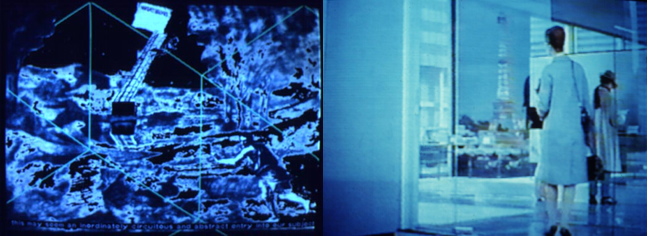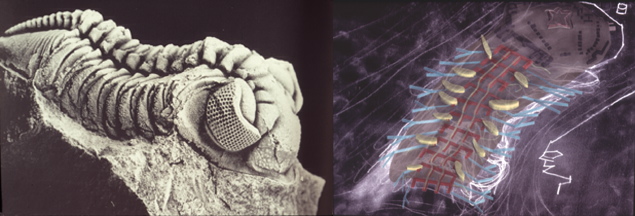Embodiment is the line between psychology and biology. One important feature of embodiment is that the interaction between the body and cognition is circular. Thus posture, facial expressions, or breathing rhythm are in a feedback loop with motor movement, mood, and cognition. I am bouncing along the street because I am happy but I am also happy because I am walking with a spring in my step.
Read Morework / play
pack donkey/man
"Man walks in a straight line because he has a goal and knows where he is going; he has made up his mind to reach some particular place and goes straight to it.The pack-donkey meanders along, meditates a little in his scatter-brained and distracted fashion, he zigzags in order to avoid the larger stones, or to ease the climb, or to gain a little shade; he takes the line of least resistance.
Read MorePlay
For Johannes Huizinga: "Play is older than culture," (p.1) and "all culture is a form of play." (According to Lewis Mumford, Huizinga's English translator was so shocked by the latter assertion that he changed the statement to read that "play is an element in culture.")
"Animals play just like men." (This is one way in which the boundary between human and animal can be broken down) Animals, too, can recognise that a sign is a signal. (Bateson) When they engage in mock battle, they have to be able to communicate to each other that "this is play." If the nip denotes the bite, at the same time it does not denote what the bite denotes. The bite is fictional. (see schizophrenia for inability to engage in such metacomunication) Note also the relationship for Bateson between threat and play. Threat also stands for other actions. (see also ritual in animals)
Read Moreplaytime 1

I entitled this lecture "Playtime" long before I had any clear idea what I would talk about, and during the past few months the title has often seemed to have a life of its own, gently prodding me towards levity, cajoling me to stop attaching excessive importance to every thought, to every turn of phrase. But it is not so easy to think playfully, to escape the censorships, the policing of thought which we all-to-easily succumb to and collude with. (Why is it so hard to play?) In this lecture, I have not altogether resisted the academic urge to define play, to fix in place that which should escape definition, to close what should be open. But, I have tried to follow a path opened up by the idea of play, a path both made and found. I might describe it as a kind of autopoetic search for ways of talking about technology and architecture today, in ways mediated by concepts of both play and time. Thinking about play has also afforded me ways of talking about the formation of subjects, about relations between technology and nature, about the 1960's, and about the politics of liberation.
Read Moreplaytime 2

Feminist interpretations of gender symbolism offer an important way of correlating the social self and technology. In societies where the nurture of children is gendered labor, the birth of the psychological self is necessarily defined in relation to a mother-world. (An interpretation fetishized by Linneaus when he devised the term mammals, meaning "of the breasts", to distinguish the class of animals embracing humans, apes, ungulates, sloths, sea-cows, elephants, bats, and all other organisms with hair, three ear-bones, and a four-chambered heart.) The difficult and painful social labor of the infant is marked by the contradictory desire to remain in, or return to, oneness with the mother-world, but also to become a separate person. But that world is different for male and female infants, for the mothering received by boys and girls is different. According to Nancy Chodorow, Jane Flax, and other feminist interpretors of "object theory", mothers tend to experience their daughters as more like and continuous with themselves and to experience a son as a masculine opposite. As a result, the identity of the male child entails a stronger sense of separation and control, of self-definition in relation to persons unlike himself, while the female child continues to experience herself in terms of merging and identification. The male child consequently establishes relatively rigid ego boundaries, while the female's remain more flexible, Masculinity comes to be defined through the achievement of separation, while feminity is defined through the maintenance of attachment. The limitations of Banham's relation to technology may well derive from technology's role as a transitional object in a decidedly masculine project of autonomy and mastery. The solution seems to me to lie less in rejecting technology or radically opposing it to architecture but in recognizing the greater complexity of our relations to gender, nature, and technology. (and learning to play)
Read MoreSustainability
How long can we sustain the unsustainable?
The rapid increase in the world's population as a whole, the presence of many people that live below the level of any equitable living standards, the emergence of large and rapidly developing economies such as India's and China's, and the profligate model of the American lifestyle (and to a slightly lesser extent, the Western European) have all contributed to concern over the "carrying capacity" of the planet. How many people can obtain adequate amounts of clean water, food, and shelter, let alone automobiles, computers, and a constant supply of consumer goods? The environmental group Bioregional.com calculates that if everyone on earth adopted the British lifestyle, it would require three planets to support. The American lifestyle would require seven planets, but we still only have one. Will wars and catastrophes be the only way to know when those limits have been reached?
The growing awareness of environmental consequence, and the sense that "we can't go on this way" without serious adverse consequences for future generations underlies the development of the term sustainability. The expression was first put into widespread political use by the United Nation's World Commission on the Environment and Development, which issued a report in 1987 known as the Brundtland Report, named after its chairperson, Gro Harlem Brundtand, the former prime minister of Norway.
Although it draws on scientific study and environmental forecasts, the concept of sustainability is a political and moral term, like justice or freedom, and the history of sustainability as as much social, political, and economic as it is environmental.
Read Moreteleology
In the Timaeus, Plato pictured the natural world as the product of a divine craftsman who looked to the world of eternal being for his model of the good and then created a natural order that was as good as it possibly could be. ("Teleology", by James C. Lennox, in Keller and Lloyd, eds. Keywords in Evolutionary Biology ) This model is the origin of what is sometimes referred to as "external teleology." The "externality" is twofold: the agent whose goal is being acheived is external to the object, and the value is the agent's value, not the object's. (This is much closer to the idea of the machine)
Read MoreTime
In a structuralist and anthropological context, human time and history are based on a signifying opposition between synchrony and diachrony. Giorgio Agamben underscores the inverse relationships of play and ritual with respect to time. If ritual serves to fix and structure the calendar, play, on the other hand changes and destroys it. For Agamben, the differential margin between diachrony and synchrony is produced by this system and is called history, or in other words, human time. (Infancy and History, p.75) In La Pensée Sauvage, Levi-Strauss drew the opposition between ritual and play into an exemplary formula: while rites transform events into structures, play transforms structures into events. For Schiller the function of the liberating play impulse is to "abolish time in time", to reconcile being and becoming, change and identity.
Read Morework
In his reassesment of the "hardships" and "poverty" of hunter-gatherer societies, Marshall Sahlins describes the effect of the market-industrial system as instituting scarcity and sentencing us to "life at hard labor." (Stone Age Economics, p.4)
Read More